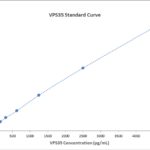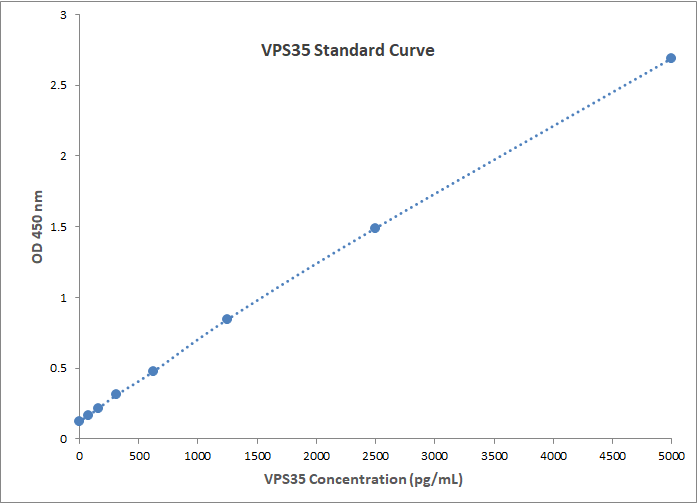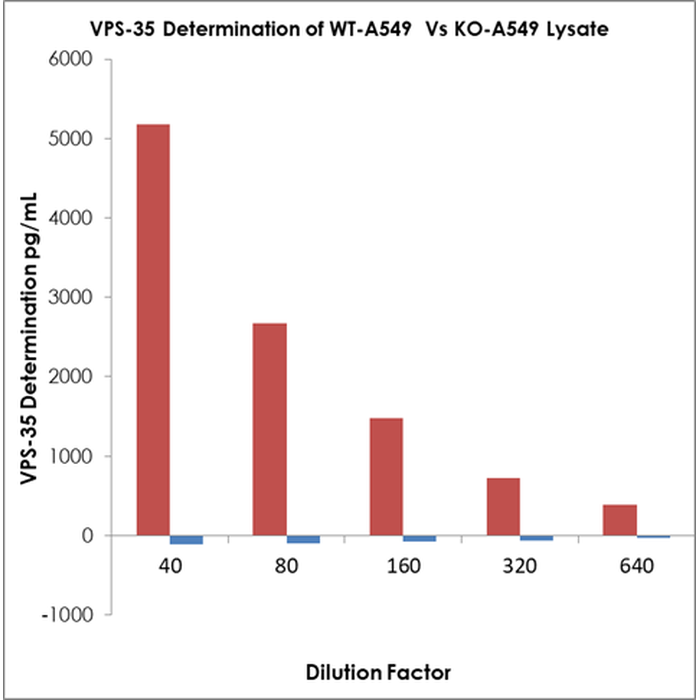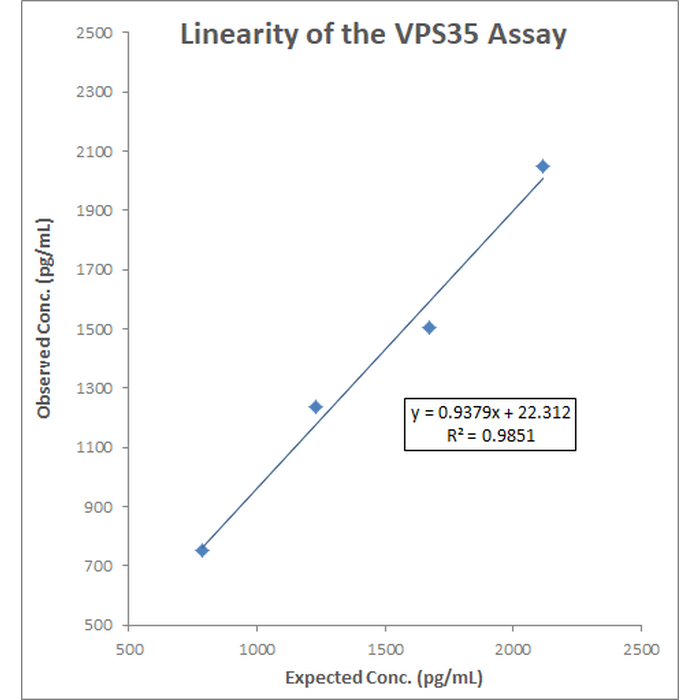| Product Name | VPS35 ELISA Kit |
| Description |
Colorimetric measurement of VPS35 |
| Species Reactivity | Human, Mouse, Rat |
| Platform | Microplate |
| Sample Types | Cell Lysate, Tissue |
| Detection Method | Colorimetric |
| Assay Type | Sandwich ELISA (Enzyme-linked Immunosorbent Assay) |
| Sensitivity | 50 pg/mL |
| Assay Range | 78.125 - 5000 pg/mL |
| Incubation Time | 3 hours |
| Number of Samples | 40 samples in duplicate |
| Other Resources | Kit Booklet Lot No. SV738133 , Kit Booklet Lot No. SV888883 , Kit Booklet Lot No. SV999550 , Kit Booklet Lot No. SV888770 , MSDS |
| Field of Use | Not for use in humans. Not for use in diagnostics or therapeutics. For in vitro research use only. |
Properties
| Storage Temperature | 4ºC and -20ºC | ||||||||||||||||||||||||||||||||||||
| Shipping Temperature | Blue Ice | ||||||||||||||||||||||||||||||||||||
| Product Type | ELISA Kits | ||||||||||||||||||||||||||||||||||||
| Kit Overview |
|
Biological Description
| Alternative Names | FLJ10752, MEM3, PARK17, TCCCTA00141, VPS35 retromer complex component, Vacuolar protein sorting-associated protein 35, maternal-embryonic 3, vesicle protein sortin 35 |
| Research Areas | Alzheimer's Disease, Cell Signaling, Golgi Proteins, Membrane Trafficking Proteins, Neurodegeneration, Neuroscience, Parkinson's Disease, Protein Trafficking |
| Scientific Background |
Vacuolar Protein Sorting 35 (VPS35) is a core component of the retromer complex, which mediates the recycling of membrane proteins from endosomes to the Golgi apparatus. VPS35 plays a critical role in maintaining neuronal protein homeostasis, synaptic function, and mitochondrial integrity. Mutations in VPS35, particularly the D620N variant, have been directly linked to familial Parkinson’s disease. These mutations impair retromer function, leading to defective trafficking of key neuronal receptors and enzymes, increased protein aggregation, and mitochondrial fragmentation. In neurodegeneration research, VPS35 is a focal point for understanding how intracellular transport defects contribute to dopaminergic neuron loss. Targeting retromer dysfunction offers a promising therapeutic strategy for modifying disease progression in Parkinson’s and related disorders. |
| References |
1. Vilarino-Guell, C. et al. (2011) Am J Hum Genet 89:162–167 2. Zimprich, A. et al. (2011) Am J Hum Genet 89:168–175 3. Rahman, A.A., Morrison, B.E. (2019) Neurosci 401:1-10. |







Reviews
There are no reviews yet.